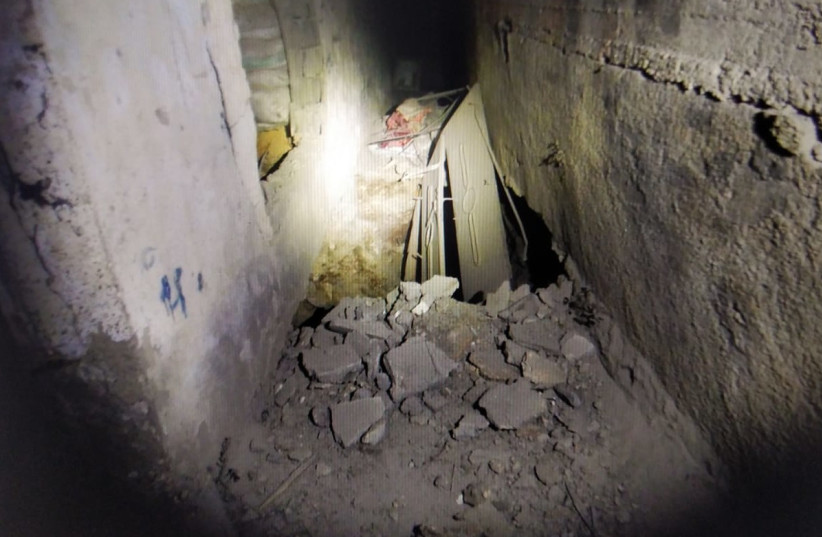IDF Chief Spokesperson Brig. Gen. Daniel Hagari on Tuesday said that the military's massive operation in Jenin could end faster than initially expected, even within a matter of days. Other IDF officials suggested the same to the Jerusalem Post and Prime Minister Benjamin Netanyahu dropped similar hints later Tuesday.
In an update early Tuesday, Hagari described how the operation had already achieved most of its goals and with less resistance or side complications than intelligence had estimated. He also noted that Gaza's terror groups had stayed out of the fight.
But Tuesday night, the IDF was drawn into an extended gunbattle surrounding Jenin's hospital.
Using a hospital to shield against IDF operations
In many past rounds of fighting in the West Bank and Gaza, terrorists have systematically used hospitals to obtain a place of refuge during fighting with the IDF, sometimes even firing rockets from hospitals in Gaza.
Around 8:00 p.m., significant IDF forces were seen suddenly pulling up to the hospital on social media, with the expectation that they had arrived to try to arrest dozens of injured terrorists.

As they were arriving, social media showed they were already greeted with a significant exchange of fire. The IDF had not commented on the latest altercation at press time and it was unclear if this battle would lead to a shift in Jenin from an almost-done operation to a greater conflict, or if the gunfight would be a temporary blip, with the overall narrative of limited Palestinian resistance holding sway.
Prior to the hospital gun battle, according to the IDF spokesperson, the military had preselected some dozens of targets to eliminate in terms of terror command centers and weapons and explosives storage areas.
All but around 10 of those locations were already destroyed or neutralized in the first day of the operation, many within the first two hours in attacks by the air force. Later Tuesday, senior IDF officials spoke about 14 targets, including new ones which had been located during the course of the operation.
All told, a mix of IDF drones have already destroyed 20 targets, while the IDF commandos, Maglan, paratroopers, regular Menashe infantry, Shin Bet (Israel Security Agency) forces have neutralized a variety of other targets, including a concealed hiding spot of a large cache of weapons under a mosque.
Pre-operation estimates were there were 150 specific wanted suspects in Jenin and an estimated total 300 potential combat fighters out of the population of 49,000.
Of those, around 300 were questioned, with at least dozens referred to the Shin Bet for more serious and extended interrogation.
However, until Tuesday night, it was suspected that at least half of the Palestinians were either hiding or had escaped Jenin individually or by mixing with around 3,000 civilians who fled the battle scenes.
IDF chief-of-staff Lt. Gen. Herzi Halevi said late Tuesday, "There will not be a refuge for terrorists. Whoever fled today, we will find them in the future."
The IDF also said that it had seized somewhere between several hundred and over 1,000 improvised explosives and other weaponry as well as hundreds of thousands of shekels in terror funds.
One of the surprises for the IDF was that there have only been around 10 gun battles in Jenin through two days.
Whether because the IDF achieved complete surprise, because of fear of being targeted by drones or other considerations, most of the fighters in Jenin have chosen to hide, rather than to confront the IDF.
In that sense and if the fighters whose identities are unknown continue to hide, once the IDF has neutralized the remaining targets and sought to find some more of the identified wanted suspects, there could be little for the IDF to do, other than leave itse forces exposed and be hit with global criticism for dragging out the operation.
Using a mosque as a hub for terror
Tuesday afternoon, the IDF provided extensive details about its operation uncovering a wide variety of terror infrastructure in the Islamic Jihad-associated Al-Ansar Mosque in Jenin.
Already on Monday, there was fighting between IDF forces and Palestinians around and within parts of the mosque.
The IDF found hidden subterranean areas where explosives and weapons were located.
However, on Tuesday, the IDF provided an extensive infographic detailing no less than 12 different terror related items spread across multiple floors of the mosque and the nearby areas.
Besides several different hidden weapons locations, the mosque was also a command and control center specifically for Islamic Jihad.
